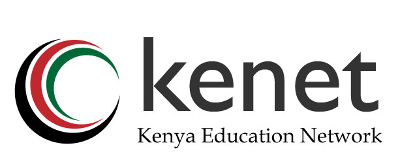You are here
Guidelines for Achieving Accessibile and Inclusive eLearning for Education Institutions
- Posted on: 26 March 2025
- By: admin
As eLearning increasingly becomes an integral part of education delivery, ensuring that is accessible and inclusive is not only a matter of compliance, but also of equity and effectiveness. Accessibility in eLearning is about making content usable for individuals with disabilities, while inclusion involves designing learning experiences that accommodate diverse needs and preferences. Together,these principles help create educational environments where all learners, regardless of their abilities or backgrounds, can fully engage with and benefit from the content.
Here are key guidelines to help make accessibility and inclusion achievable in your institution
- Develop an Accessibility and Inclusion Policy:Establish a clear policy that outlines your institution's commitment to accessibility and inclusion in eLearning. This policy should set standards for content creation, technology use, and support services. It should be communicated across the institution to ensure that all stakeholders understand and adhere to these standards. You can use KENET’s sample eLearning policy template for your customization.
- Incorporate Accessibility from the Start:Embed accessibility and inclusion principles into the design phase of eLearning courses. Consider diverse learner needs from the beginning rather than retrofitting content later. This proactive approach helps in creating content that is naturally accessible and inclusive.
- Utilize Established Accessibility Guidelines:Adhere to established guidelines such as those emphasised by Commission of University Education(CUE) and the Web Content Accessibility Guidelines (WCAG). These guidelines provide a comprehensive framework for making web content accessible to people with disabilities. Regularly review and apply these standards to your eLearning materials.
- Engage in Continuous Training and Professional Development:Provide ongoing training for faculty, and eLearning teams on accessibility best practices and inclusive design. This training should cover current standards, assistive technologies, and practical strategies for creating accessible content.
- Use Accessible Technologies and Tools:Select and utilize eLearning tools and platforms that support accessibility features. Ensure that Learning Management Systems (LMS) and other digital tools are compatible with screen readers, keyboard navigation, and other assistive technologies.
- Design with Universal Principles in Mind:Implement universal design principles to create content that is accessible to as many users as possible. This includes using clear and simple language, providing text alternatives for non-text content, ensuring sufficient colour contrast, and designing for keyboard navigation.
- Provide Alternative Formats:Offer content in multiple formats to accommodate different learning preferences and needs. This might include providing written transcripts for audio content, captions for videos, and alternative formats for interactive elements.
- Solicit and Act on User Feedback:Collect feedback from users, including those with disabilities, to identify areas for improvement. Use surveys, focus groups, and usability testing to gather insights and make necessary adjustments to enhance accessibility and inclusion.
- Implement Accessibility Testing:Regularly test eLearning materials for accessibility using automated tools and manual checks. This helps identify and address potential issues early in the development process. Engage users with disabilities in testing to ensure real-world accessibility.
- Foster an Inclusive Culture:Promote a culture of inclusion within your institution by encouraging collaboration and dialogue about accessibility. Recognize and celebrate efforts to improve accessibility and inclusiveness and address any challenges or barriers that arise.
- Monitor, Audit and Evaluate:Continuously monitor, audit and evaluate the effectiveness of your accessibility and inclusion efforts. Review course materials, gather feedback, and assess compliance with accessibility standards to ensure that your eLearning environment remains inclusive and effective.
- Provide Support and Resources:Ensure that support resources are available for both learners and faculty. This includes technical support for accessibility issues, as well as resources and guidance on best practices for creating and consuming accessible content.
By following these guidelines, your institution can create a holistic and effective eLearning environment that prioritizes learner diversity, technology adaptability and continuous improvement.This commitment not only enhances educational equity but also fosters a more engaging and supportive learning experience for all.
